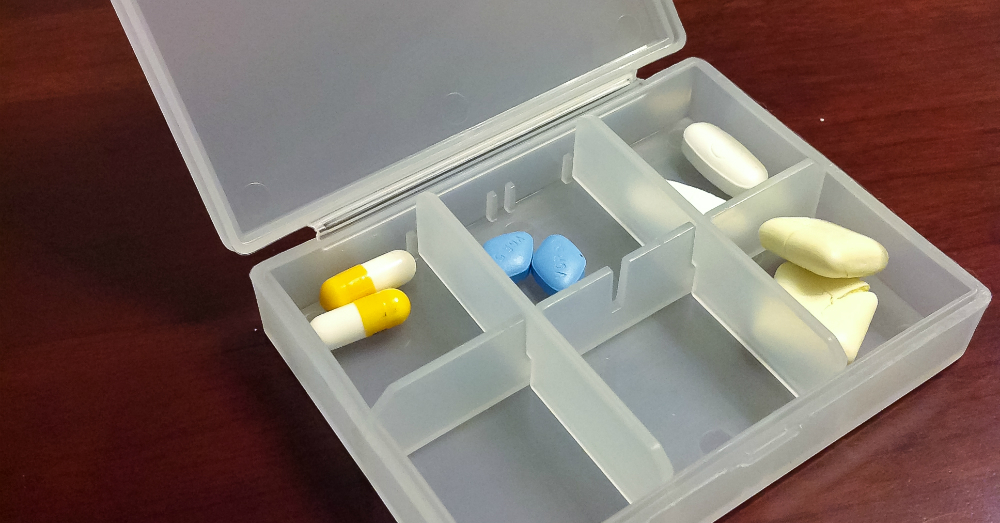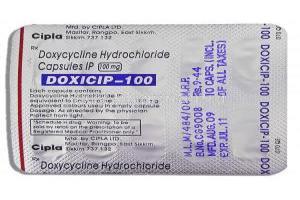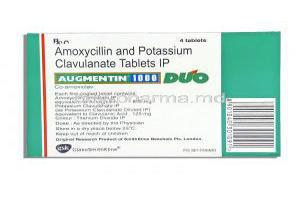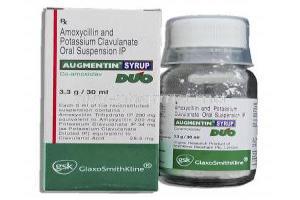Bacampicillin
- Introduction
- Uses of Bacampicillin
- How Bacampicillin Works
- Off-Label Uses
- Dosage and Administration
- Composition
- Storage
- Interaction with Other Medications
- Side Effects
- Common Side Effects
- Warning and Contraindications
- Careful Administration
- Important Precautions
- Administration to Specific Populations
- Overdosage
- Handling Precautions
Introduction
Historical background of Bacampicillin
Bacampicillin, a modified version of ampicillin, has made advancements in medicine for treating bacterial infections. Throughout the years, scientists have carefully improved its composition to enhance its effectiveness and overcome the shortcomings of treatments.
The significance in modern medicine
In today's world, Bacampicillin demonstrates the progress made in the field of antibiotics. It enhances absorption when taken orally and effectively fights bacteria allowing for an efficient and streamlined treatment process for patients.
Uses of Bacampicillin
Primary indications and diseases treated
Many antibiotics can be used to treat urinary tract infections (UTIs) and soft tissue infections. However, the choice of antibiotic depends on the type and severity of the infection, the patient’s medical history, and the local resistance patterns of the bacteria12. Some of the most common antibiotics for UTIs are nitrofurantoin, trimethoprim-sulfamethoxazole, and fosfomycin1234. These antibiotics work by killing or stopping the growth of the bacteria that cause UTIs. For soft tissue infections, such as skin and wound infections, some of the commonly used antibiotics are cephalexin, clindamycin, and dicloxacillin5. These antibiotics target the bacteria that are often found on the skin or in wounds, such as staphylococcus and streptococcus.
References:
1: What Are the Most Common Antibiotics for UTIs? - Verywell Health 2: What Are the Best Antibiotics for a Urinary Tract Infection … - GoodRx 3: Antibiotics For UTI Treatment - What Are My Options? 4: Urinary tract infection (UTI) - Diagnosis and treatment - Mayo Clinic 5: Skin and Soft Tissue Infections - Infections - Merck Manuals Consumer Version : Common Questions About Wound Care - American Family Physician
Comparative efficacy with other antibiotics
Bacampicillin is a prodrug of ampicillin, which means that it is converted to ampicillin in the body after it is taken orally123. Bacampicillin has a higher rate of absorption than ampicillin when taken orally, because it is more stable and less affected by stomach acid12. This is especially advantageous for patients with gastrointestinal issues, such as vomiting or diarrhea, as it ensures they receive the right amount of medication needed for effective treatment2. Bacampicillin is used to treat infections caused by bacteria that are sensitive to ampicillin, such as respiratory tract infections, urinary tract infections, and skin infections14.
References:
1: Bacampicillin: Uses, Interactions, Mechanism of Action - DrugBank Online 2: Pharmacokinetics of ampicillin and its prodrugs bacampicillin and … 3: Bacampicillin - Wikipedia 4: Bacampicillin hydrochloride | DrugBank Online
How Bacampicillin Works
Mechanism of action in the body
Bacampicillin works as a substance that fights against microbes by stopping the production of cell walls. After it enters the body, it transforms into ampicillin, effectively eliminating bacteria vulnerable to its effects by attaching to specific proteins known as penicillin-binding proteins (PBPs).
The role of prodrugs and bioavailability
Bacampicillin being a prodrug, is cleverly formulated to ensure the active drug reaches its concentration in the bloodstream. This increased bioavailability not only improves treatment effectiveness but also lowers the risk of side effects linked to high drug concentrations in specific areas.
Off-Label Uses
Research findings supporting non-conventional uses
New studies have revealed that Bacampicillin may have been used to treat bacterial infections not typically addressed by standard treatments, such as gonorrhea, typhoid fever, and meningitis12. Although these findings are not yet widely accepted, they suggest the possibility of diverse applications in the future. Bacampicillin is a prodrug of ampicillin that has higher oral absorption and bioavailability than ampicillin13. It is converted to ampicillin in the body and has the same spectrum of activity against bacteria that are susceptible to ampicillin13.
References:
1: Bacampicillin: a New Orally Well-Absorbed Derivative of Ampicillin … 2: Clinical Pharmacological Studies with Bacampicillin 3: Bacampicillin: a new orally well-absorbed derivative of ampicillin …
Popularity and controversies in off-label prescribing
Using medications for purposes than their approved indications, known as off-label prescribing, can be a topic of contention. The discussion revolves around balancing ensuring patient safety and promoting therapeutic advancements12. Like with many other drugs, the off-label utilization of Bacampicillin is subject to scrutiny and requires thorough research before it gains widespread acceptance. The FDA approves Bacampicillin for treating infections caused by susceptible bacteria, such as respiratory tract infections, urinary tract infections, and skin infections3. However, some studies have suggested that Bacampicillin may also benefit other conditions, such as gonorrhea, typhoid fever, and meningitis. These off-label uses are not yet proven or authorized by the FDA and may pose risks or uncertainties for patients and prescribers123.
References:
1: Draft ASHP Guidelines on Appropriate Off-Label Medication Use 2: The Law and Practice of Off-Label Prescribing and Physician Promotion 3: Understanding Unapproved Use of Approved Drugs “Off Label” : Bacampicillin: a New Orally Well-Absorbed Derivative of Ampicillin … : Clinical Pharmacological Studies with Bacampicillin
Dosage and Administration
Standard dosage recommendations
The usual dose for adults is generally between 800 mg, to 1200 mg, taken two times a day. However, the specific dosage may vary depending on the seriousness and nature of the infection.
Adjustments based on patient factors
Adjusting the dosage is crucial when dealing with patients who have kidney problems. As for children, their doses are typically based on their weight to ensure that the treatment is both safe and effective.
Duration of therapy and timing considerations
The length of the treatment primarily relies on how severe and what kind of infection a person has. However, patients need to finish the prescribed course even if their symptoms improve to avoid the development of antibiotic resistance.
Composition
Chemical structure and properties
Bacampicillin, which is a man-made form of penicillin, has a structure that is esterified. This structure increases its ability to dissolve in lipids, and as a result, it is absorbed effectively from the digestive system.
Active ingredients and excipients
The main component of Bacampicillin is Bacampicillin itself, although the specific additional substances used may differ depending on the manufacturer. These other substances usually consist of binders, fillers, and stabilizers that are included to maintain the effectiveness and quality of the medication.
Storage
Optimal storage conditions
It is essential to keep Bacampicillin stored in a dry location away from direct sunlight. The ideal temperature, for storage would be around 20 to 25°C.

Shelf life and expiration considerations
Like other medications, Bacampicillin has a specific period during which it remains effective. After this time, its efficacy may be diminished. It is essential to check the expiration date on the packaging and avoid consuming it after it has expired.
Disposal recommendations for expired medications
Make sure to dispose of expired Bacampicillin in a manner. It's an idea to check with your local guidelines or pharmacies for any drug take-back programs that can help ensure environmental safety.
Interaction with Other Medications
Known drug-drug interactions
Using allopurinol together with bacampicillin may increase the likelihood of developing rashes. Moreover, it is essential to note that taking bacampicillin could potentially decrease the effectiveness of contraceptives, so it might be necessary to consider alternative birth control methods.
Potential effects on drug metabolism pathways
Bacampicillin has the potential to affect the liver's enzyme system, which could lead to changes in how other drugs are metabolized when taken together.
Dietary and lifestyle interactions
Drinking alcohol while undergoing treatment can reduce the effectiveness of the medication. Increase the likelihood of experiencing side effects. It is recommended to avoid alcohol and be cautious about consuming foods that could interfere with how well the drug is absorbed.
Side Effects
Overview of adverse reactions
Although uncommon, Bacampicillin may cause effects ranging from mild gastrointestinal issues to allergic reactions.
Differentiating common and rare side effects
Some common side effects that may occur include feeling nauseous, experiencing diarrhea, or developing skin rashes. While not as expected, there are instances where more severe reactions can happen, such as anaphylaxis, blood disorders, or painful skin reactions. Patients must inform their healthcare provider if they notice any unusual or persistent symptoms.
Common Side Effects
Gastrointestinal disturbances
Gastrointestinal (GI) issues are sometimes seen in patients who take Bacampicillin. These problems can include feeling nauseous, having diarrhea, vomiting or experiencing pain. It's important to note that while these effects are usually temporary if the symptoms persist, it's advisable to consult a healthcare professional.
Allergic reactions
Although allergic reactions occur often, they can appear in different ways ranging from mild skin rashes to more anaphylactic severe responses. It's essential to be aware of indications such as hives (urticaria) swelling of the lips, face, or tongue, and difficulty breathing. If any of these signs arise, it is crucial to seek medical attention.
Effects on liver and kidney functions
Extended use or increased dosages of Bacampicillin may occasionally stress the functioning of the liver and kidneys. Regular blood tests could reveal levels of liver enzymes or changes in kidney parameters highlighting the importance of consistent monitoring.
Warning and Contraindications
Known contraindications for Bacampicillin
Bacampicillin should not be used by people allergic to penicillin antibiotics or with a history of severe allergic reactions to other medications. These precautions are in place to prevent life-threatening reactions that may occur with its use.
Patient groups at risk
Certain groups of people may have a risk profile when using Bacampicillin. These include individuals with impairments existing in liver diseases or mononucleosis. In these situations, it is essential to assess and manage the treatment.
Careful Administration
Monitoring requirements during therapy
To ensure the effective use of Bacampicillin therapy, it is essential to regularly conduct blood tests to assess kidney and liver function and monitor for any signs of blood disorders. This ongoing vigilance helps prevent complications and ensures the therapy provides maximum therapeutic benefit.
Signs and symptoms warranting dose adjustment or discontinuation
If you experience any symptoms, persistent diarrhea, unexplained bleeding, or severe skin reactions while taking Bacampicillin, it is essential to seek immediate medical attention. Your doctor may need to reassess your Bacampicillin treatment and consider adjusting the dosage or stopping it altogether if necessary.
Important Precautions
Pre-treatment tests and assessments
Before starting Bacampicillin treatment, gathering a medical background and conducting an allergy test is crucial. Additionally, it may be necessary to perform tests to assess kidney function and liver enzyme levels, which will serve as a reference point for evaluations.
Potential long-term effects to be wary of
Long-term use of Bacampicillin could potentially lead to liver damage kidney problems, or abnormalities, in blood counts. That's why monitoring and evaluating patients regularly during extended treatment periods is essential.
Administration to Specific Populations
Elderly: Adjustments and concerns specific to older adults
In adults, changes in the body can affect how medications are processed and eliminated. This may require adjusting the dosage or timing of medication administration while monitoring potential risks to prevent complications.
Pregnant Women and Nursing Mothers: Safety profile, known risks, and benefits
Bacampicillin is generally considered safe. It should only be given to pregnant or breastfeeding women if the benefits outweigh any potential risks. Although it can be found in breast milk, we are still uncertain about the effects on the baby, so it's essential to proceed cautiously.
Children: Dose calculations, safety considerations, and monitoring
In children, the dosage of Bacampicillin is usually determined based on their weight. Although Bacampicillin is generally well tolerated, it is important to observe for any gastrointestinal issues or signs of allergies and modify treatment plans accordingly.
Overdosage
Signs and symptoms of Bacampicillin overdose
An overdose can lead to symptoms, such as increased activity, restlessness, feeling nauseous or throwing up, and in severe cases experiencing seizures. It is crucial to take action to minimize any potential negative consequences.

Immediate interventions and long-term monitoring
In the case of an overdose, medical professionals may consider performing lavage or administering activated charcoal as immediate measures. It is crucial to monitor fluid levels, kidney and liver function and provide symptomatic treatment as the main focus of managing post-overdose situations.
Handling Precautions
Recommendations for healthcare professionals
For professionals who handle Bacampicillin; 1. Make sure to wear gloves to avoid contact. 2. Ensure no drug residue is left on surfaces or instruments. 3. Stay informed about the recommended administration protocols and possible drug interactions. These precautions are essential for effectively handling Bacampicillin in the medical field.
Safe handling and disposal methods
It is essential not to throw expired or unused Bacampicillin in regular trash or flush it down the toilet. It is recommended to utilize community drug take-back programs or seek advice from a pharmacist on disposal methods.












